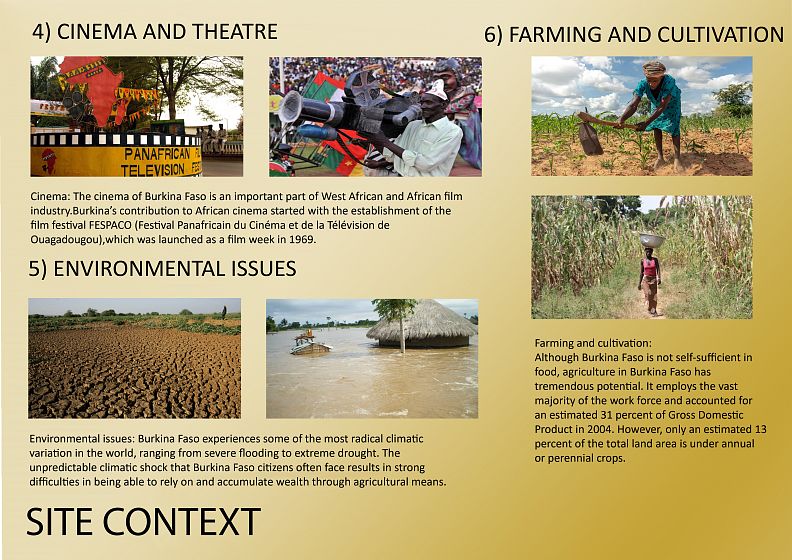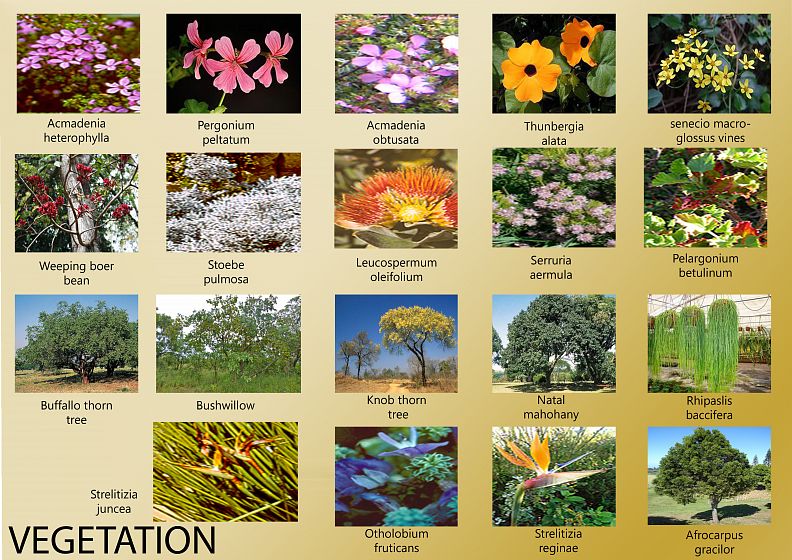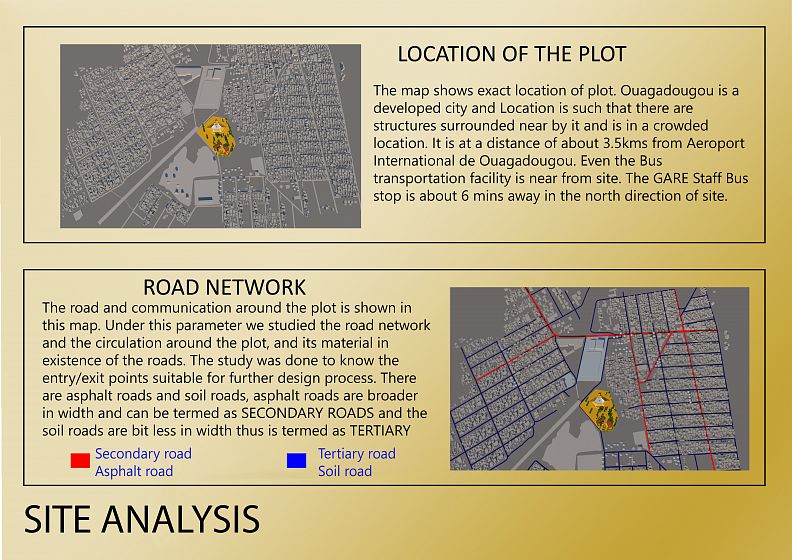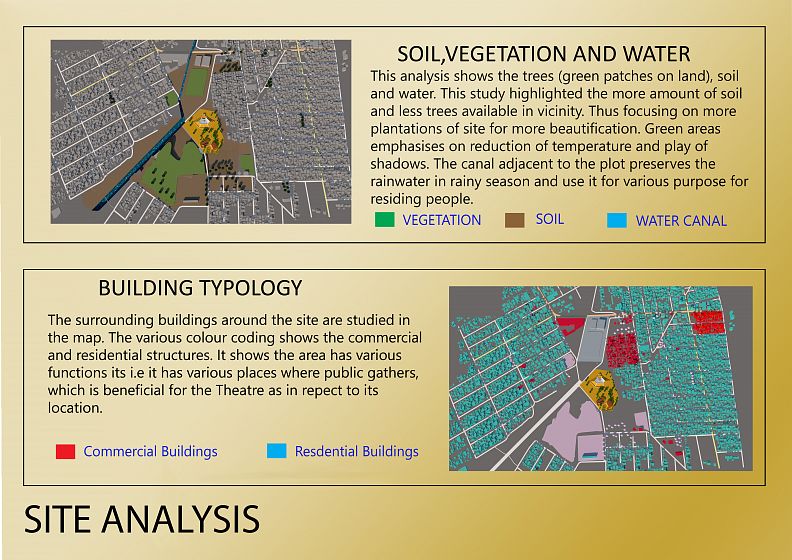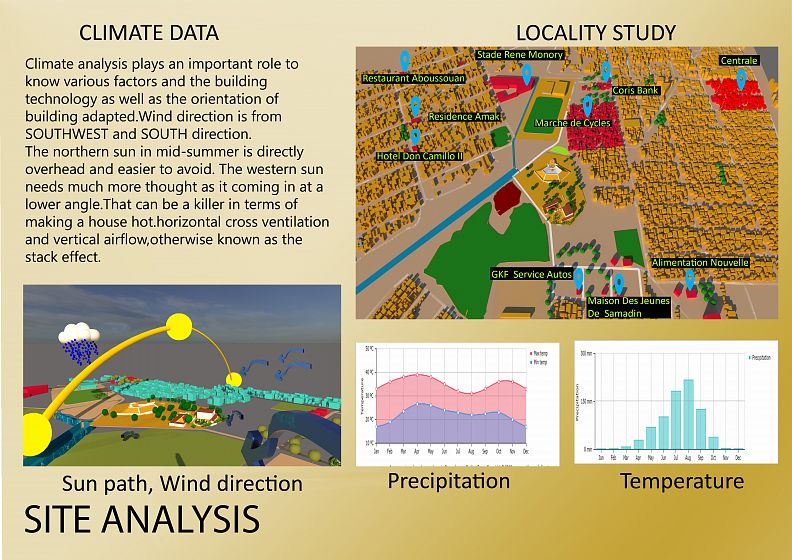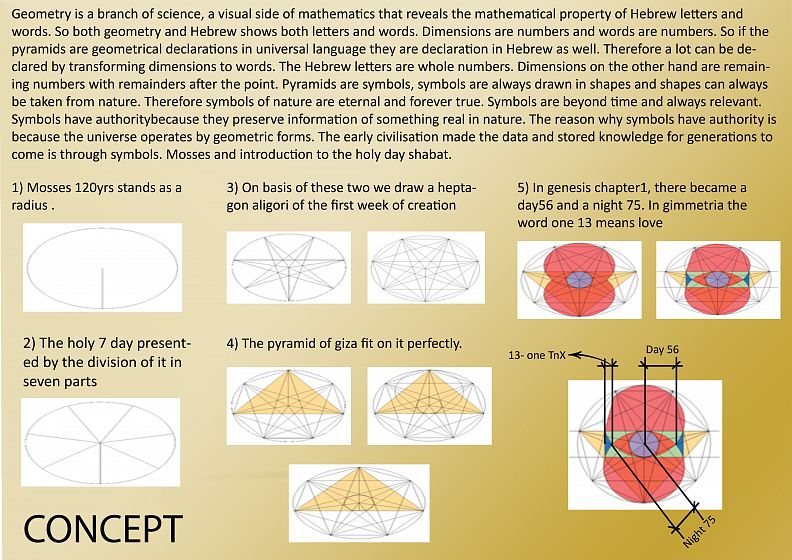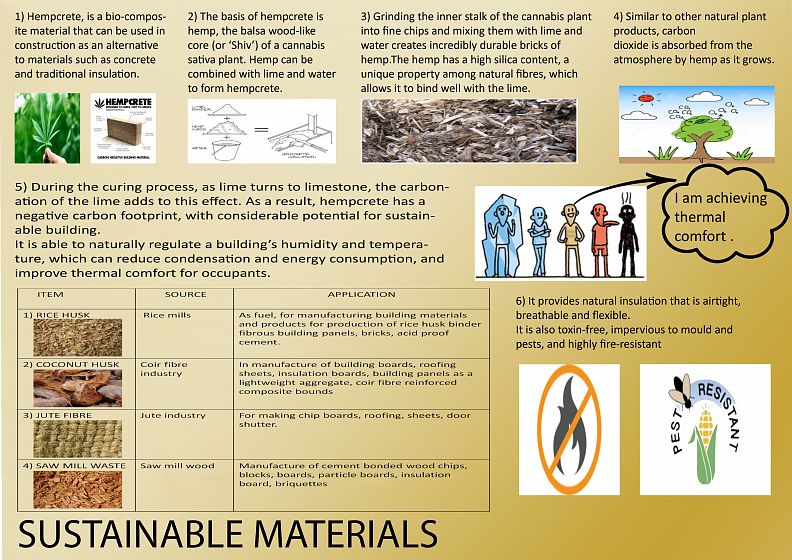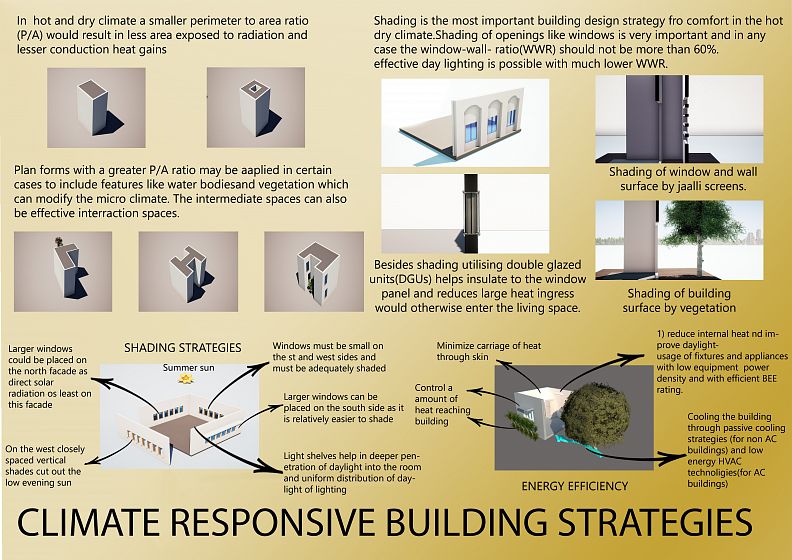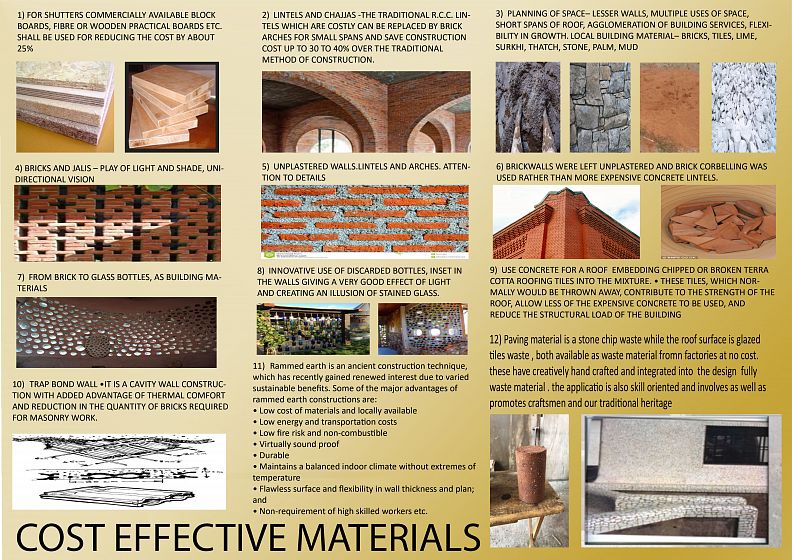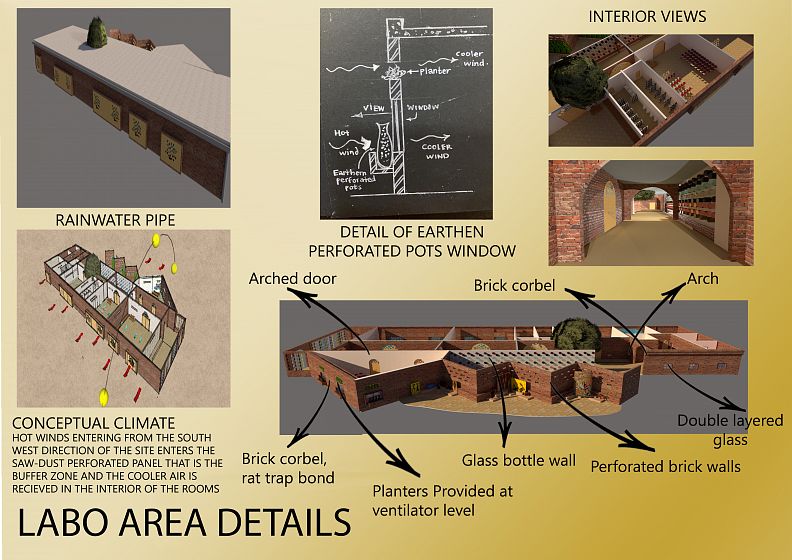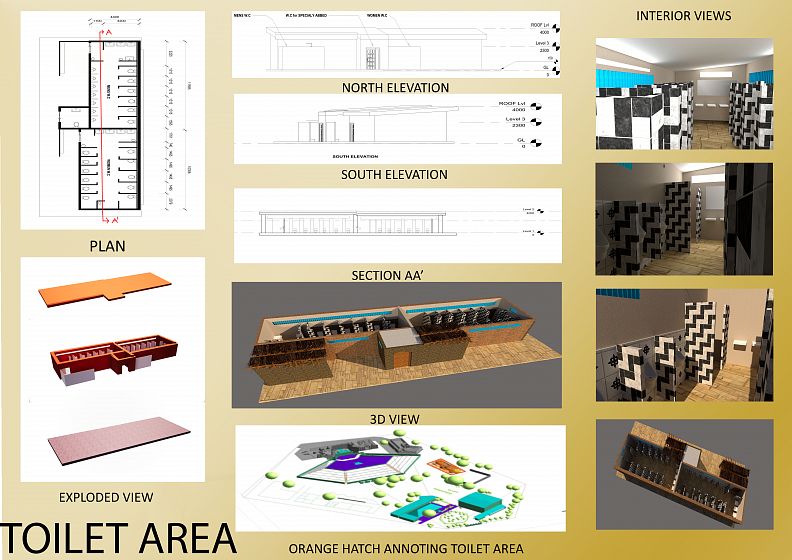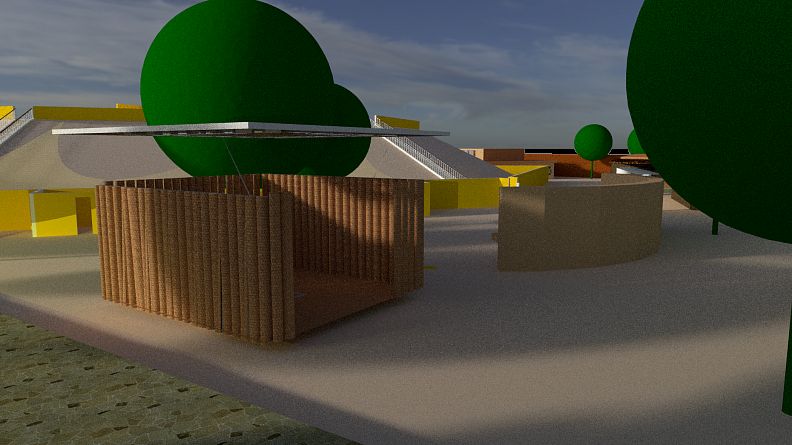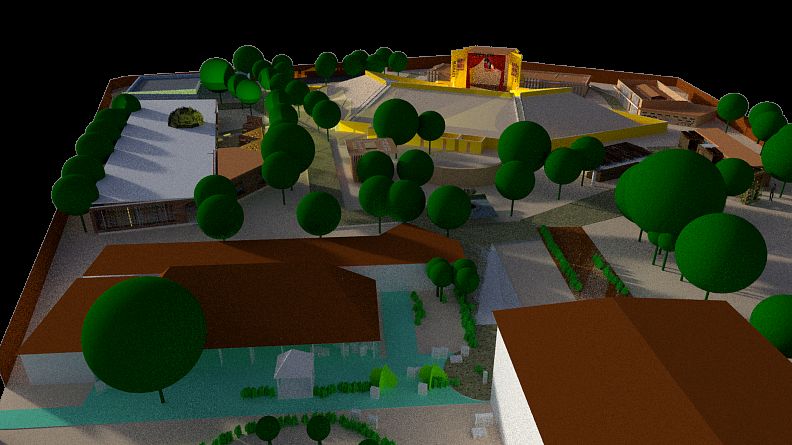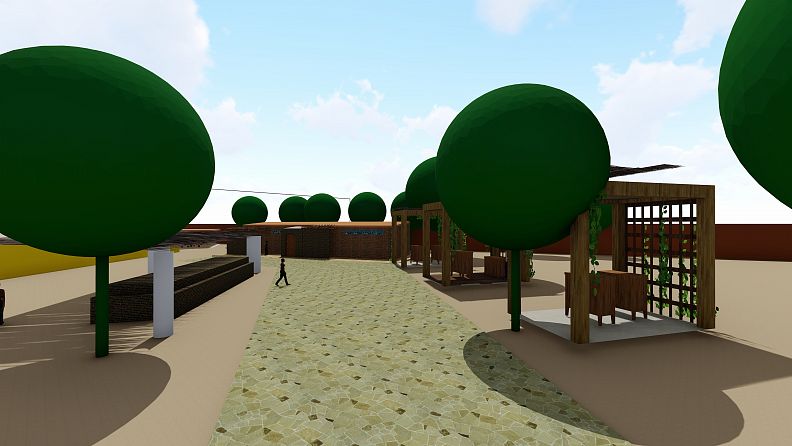GREEN AMPHITHEATRE (THEATRE DESIRE DE BONOGO)

Project idea
To start with the design and decode the brief we started by studying the Ouagadougou city materials, used construction, vegetation, culture, cost effective methods for achieving carbon neutral materials which won’t harm the ecology. Climate and important aspects was the main objective to deal with, making smart use of materials to achieve sustainability and climate responsive structures. Making the structures more functional with respect to climate and also achieving efficiency in cost was the main objective.
Project description
After studying the locality and surroundings using various cost effective methods like mud, hemp Crete, rice husk, coconut husk, saw dust boards, walls with glass bottles. The three main space that are the work area show are and labo area are placed in such a manner that it follows the symbols of sacred geometry as shown in the zoning. Cost efficient techniques such as incorporation of brick jali walls, perforated earthen pots vegetation and landscape use of perforated sawdust panels, sawdust panels for furniture such as tables chairs red carpet for insulation provided for sound insulation. Use of recycled stained glass bottles in corridor areas to have the play of light and shadow, use of brick cornices, use of pieces of flagstone for pathways also in the roof slab for strengthening of the roof etc. the primary focus of sustainability is been achieved using the mud walls, use of stone chips in the exterior of the office building. Hence all the materials used are according to the surroundings as well as they are sustainable.
Technical information
The Stage structure is weather and water-tight and designed using stone a readily available building component and use of jute fibre roof sheet on top of the stage to cover it. The height of back screen of stage is 11m high so as to maintain focus on stage right from the first seat to the top most seat.
The existing stage is covered with a scenic cage with closable front by addition of poles and curtains.
Walkable structures and poles for projectors, sound monitors and curtains provision is done. Provision of it is safely incorporated into the front of stage area.
Designing of the main 3 units;
THE LABO AREA – In labo area, music room has brick corbel finish from the exterior face facing the east side if the site on the west side of the building rat trap bond is used for construction of walls. It is provided with a buffer zone which enables the air to cool itself before entering the structure by the use of sawdust perforated boards. Typology of the slab is filler slab. The art gallery facing the east side of the site is placed on the rammed earth bed adjoining to it is the brick Jali bond providing shade on the inner side of the structure. Hence improving the temperature of the air coming inside the corridor filled with stained glass bottles is interesting space which plays with light and shadow. On the entrance of the labo area use of recycled waste glass bottles gives an aesthetic look to the structure. Use of perforated earthen pots half filled with water helps in improving the indoor air quality.
THE WORK AREA-all the exterior walls are made up of mud which are 500mm thick as the floor to floor height is 3.7 M and the internal walls are made up of hemp, the work area located just behind the stage has an entry point with the ramp for the disabled. As we enter the work area there is a waiting area where the performers, artists can wait for their performances as we move further there is another common writing are where the guest or common people can interact with the artist. There is a passage which directs us straight to the stage as we move further there are different dressing room for males and females which s us to the technical room incorporating all the technical facilities related the stage. There is a back door which leads to the sewing room. The facade facing south side of the site has an architectural element which is provided to protect the structure against south summer sun and from the hot winds.
SEWING ROOM- the sewing room has a stained glass wall on the southwest direction it has mud walls on rest of the sides, internal walls are made of hemp Crete. There are 3 main divisions in this area where the sewing, cutting and other practices take place it has a roof which is a pitched one along with louvers on the ridge. The other room has the washing, ironing working areas. The third area has storage of materials.
OFFICE AREA- this area has an exterior facade of stone chips which is constructed of mud walls. The inner furniture is made up of sawdust board the slab provided is filler slab.
THE SHOW AREA- art gallery is just provided along with the labo area which gets a view from the amphitheatre itself showing all the artefacts. The show area also includes few food stalls which are incorporated along with the landscaping outside, also a seating provisions are done for all the people along with the sun dial.
Technical information –
1) Use of sawdust boards for sound insulation.
2) Use of arches to avid lintel construction therefore cost effective.
3) Use of mud helps to improve the comfort level by 10-15 degrees.
4) Use of hempcrete to assure the life of structure up to 300 years and more which also include the thermal insulation properties and also reduces carbon footprint.
The disabled toilet provision too is made, along with ladies and gents toilet.



